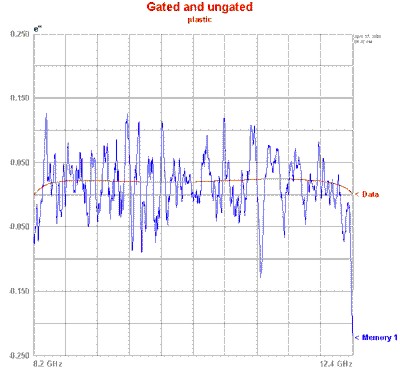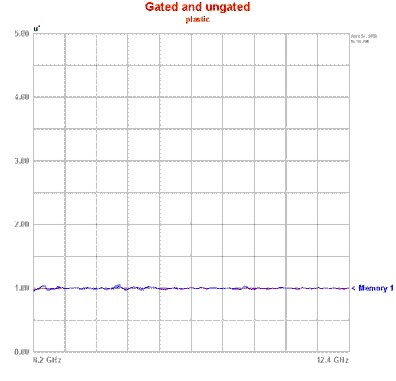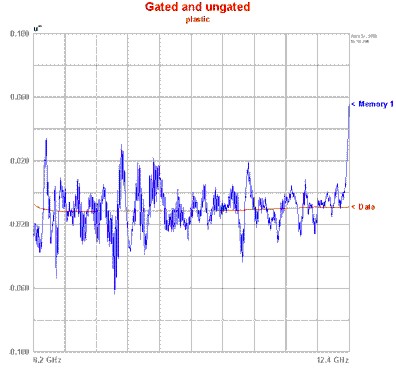
The N1500A software allows you to make calibrated Freespace measurements.
Below is a simple freespace fixture.

This fixture consists of two x-band waveguide horns attached to a test stand that supports the material being tested. Check the Materials Support website for sources of freespace fixtures and components.
The measurement below was made on a .1 inch sheet of clear plastic using a cal set produced by a GRL cal. The "noise' on the trace is due to residual errors caused by imperfect knowledge of the cal standards. This includes the standards used to do the original coaxial/waveguide, the metal plate used in the GRL cal, the fact that gating can't completely isolate the reflections off the antenna from other reflections and the fact that the mode of propagation is not completely TEM.

The plot below is a measurement on the same sample but this time the gated response isolation calibration is applied. This removes a significant amount of the residual errors by normalizing gated reflection measurements to gated measurements made on the metal plate and normalized gated transmission measurements to gated measurements made on the empty fixture. Leakages are also removed.

While the gated response isolation calibration has many advantages it also has one disadvantage. This plastic is thought to have a relatively constant e' over this frequency range. Note the slight slopes at the beginning and end of the measurement. Using the gates produces an undesirable effect known as edge effects. Consult your analyzer's manual on gating and edge effects. In general these gating artifacts appear as errors in the first and last ten percent of the measurement. You can change the horizontal scale to eliminate viewing these values. Learn how.
Below are plots showing the other material parameters on this sheet of plastic with and without the gated resp/isol cal applied.



Since this material is apparently non-magnetic ( u = 1 -j 0 ) one of the other measurement models would have provided better results.